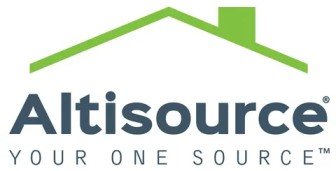Education is an ever-evolving landscape, with new approaches constantly emerging to meet the changing needs of students in the 21st century. One such innovative approach is “The New School,” a concept that challenges traditional educational paradigms and embraces a more progressive and student-centered model.
Evolution of Education
Traditional Education Systems
Traditional education systems have long been characterized by rote memorization, standardized testing, and teacher-centered instruction. While these methods have their merits, they often fail to fully engage students or prepare them for the complexities of the modern world.
Emergence of Progressive Education
In response to the limitations of traditional schooling, progressive education movements began to gain traction in the late 19th and early 20th centuries. These approaches emphasized experiential learning, critical thinking, and holistic development.
The New School Approach
Building upon the foundations of progressive education, The New School represents a paradigm shift in how we educate our youth. It emphasizes personalized learning experiences, interdisciplinary studies, and real-world applications.
Core Principles of The New School
Student-Centered Learning
At the heart of The New School is the belief that every student is unique and deserves an education tailored to their individual needs and interests. This approach empowers students to take ownership of their learning journey and pursue topics that resonate with them.
Project-Based Curriculum
Instead of relying solely on textbooks and lectures, The New School employs a project-based curriculum that encourages hands-on learning and fosters creativity. Students collaborate on meaningful projects that address real-world problems, gaining practical skills and insights along the way.
Collaborative Learning Environment
Gone are the days of solitary study and competition for grades. In The New School, collaboration is key. Students work together in diverse teams, pooling their strengths and perspectives to achieve shared goals. This not only enhances their social skills but also teaches them the value of cooperation and teamwork.
Integration of Technology
In an increasingly digital world, technology plays a central role in The New School model. From interactive whiteboards to online resources, students have access to a wide range of tools and technologies that enhance their learning experiences and prepare them for the demands of the future.
Benefits of The New School Model
Enhanced Student Engagement
By making learning more relevant and personalized, The New School model significantly increases student engagement and motivation. Students are more eager to participate in class discussions, explore new ideas, and take ownership of their learning.
Development of Critical Thinking Skills
Critical thinking is a cornerstone of The New School philosophy. Through inquiry-based learning and problem-solving activities, students learn to think analytically, evaluate information critically, and make informed decisions—a skill set that is invaluable in today’s complex world.
Preparation for the Future
In a rapidly changing job market, adaptability and creativity are essential skills. The New School equips students with the tools they need to thrive in the 21st century, preparing them for careers that may not even exist yet and instilling in them a lifelong love of learning.
Challenges and Criticisms
Resistance to Change
Implementing The New School model can be met with resistance from educators, parents, and policymakers who are wary of departing from traditional educational practices. Overcoming this resistance requires strong leadership, clear communication, and evidence of the model’s effectiveness.
Lack of Standardization
One criticism of The New School is the lack of standardized curriculum and assessment metrics. While flexibility is a strength of the model, it can also lead to inconsistencies in student outcomes and difficulties in comparing performance across schools.
Accessibility Issues
Not all communities have the resources or infrastructure necessary to support The New School model. Ensuring equitable access to quality education requires addressing issues of funding, technology access, and community support.
Success Stories and Case Studies
Examples of Successful Implementation
Despite the challenges, numerous schools and educational institutions around the world have successfully adopted The New School model and witnessed transformative results. From improved academic performance to increased graduation rates, the evidence speaks for itself.
Impact on Student Achievement
Studies have shown that students who attend New School programs demonstrate higher levels of academic achievement, creativity, and critical thinking skills compared to their peers in traditional schools. These outcomes highlight the effectiveness of The New School model in preparing students for success.
How to Implement The New School Model
Training for Educators
Transitioning to The New School model requires training and support for educators to adapt their teaching practices and embrace new methodologies. Professional development opportunities, mentorship programs, and ongoing coaching can help teachers effectively implement the model in their classrooms.
Building Support from Stakeholders
Successfully implementing The New School model also requires buy-in from parents, students, administrators, and policymakers. Building consensus around the benefits of the model and addressing concerns through open dialogue and community engagement are essential steps in gaining support.
Creating Flexible Learning Spaces
Traditional classroom settings may not always be conducive to The New School model. Creating flexible learning spaces that accommodate different teaching and learning styles, as well as fostering a sense of community and collaboration, is crucial for the model’s success.
Conclusion
The New School represents a bold vision for the future of education—one that prioritizes student empowerment, creativity, and critical thinking. By embracing innovative approaches and challenging the status quo, we can create learning environments that inspire curiosity, foster collaboration, and prepare students to thrive in an ever-changing world.




